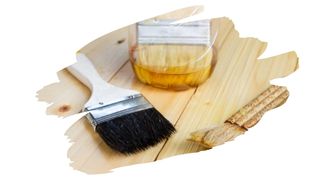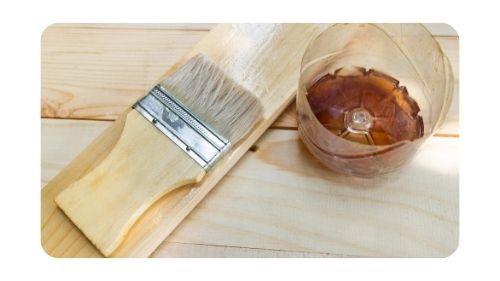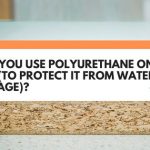Shellac is some pretty versatile stuff.
This sticky substance will stay on everything from metal and glass to varnish and lacquer. It can even be used to coat and mask the smell of particularly whiffy stains and finishes.
But, can shellac cover polyurethane?
Well, it depends on the type of shellac product you’re using. Dewaxed shellac will happily stick to anything – literally anything at all. Made from waxed shellac which has had its wax component removed, this sealer can be coated over polyurethane.
Waxed shellac, on the other hand, reacts in virtually the opposite way. The wax substance contained in this naturally sourced resin makes it difficult for it to stick onto either water-based or oil-based polyurethane.
But just because you can apply shellac onto that polyurethane, doesn’t always mean that you should…

This post may contain affiliate links to products that we receive a commission for (at no additional cost to you). Learn more here.
Shellac vs Polyurethane: A Quick Primer To These Two Sealers
There is one main thing that separates these two sealers; their level of durability.
Shellac may certainly dry into a resin, but that resin coat is fairly brittle. As a result, this wood finish scratches incredibly easily.
Polyurethane, on the other hand, has a high level of durability thanks to the little bit of elasticity it has after application. That flexibility offers a decent amount of ‘give’ in a polyurethane surface. And this is what allows polyurethane to be so scratch-resistant.
Related Post: Can You Put Shellac Over Paint (Best Practice Revealed!)
So, Why Do People Bother To Apply Shellac On Polyurethane?
Shellac is a great way to mute the strong smell of polyurethane.
The VOCs in polyurethane give off some really strong fumes – which is often referred to as ‘off-gassing’.
Now, while polyurethane dries and cures, (a process that can take up to 2 weeks to complete), its to be expected that poly will release strong fumes as it evaporates and hardens.
Related Post: Polyurethane Not Drying? What You Can Do To Fix It
What some people don’t expect, however, is that the smell of poly can hang around long after it has cured. Up to 6 weeks in fact.
Which means, that if you want to mute the strength of that poly odor sooner rather than later, then you will need to coat it with something.
And that is where shellac can come in handy.
A shellac spray coat can help to reduce, (if not completely eliminate), those strong polyurethane whiffs.
So, one of the main reasons why we put shellac over polyurethane is because we need that poly smell gone sooner, rather than later.
But, the exact type of shellac you use is very important…

Waxed Shellac vs Dewaxed Shellac
The difference between waxed and dewaxed shellac is obvious in the name. Waxed shellac still has wax in it. Dewaxed shellac has had all wax removed from it.
Now, shellac wax is some really slippery stuff. Next to nothing can stick to it (and vice versa). You try and apply this stuff on polyurethane, varnish, stains, you name it… and it won’t stay on.
But dewaxed shellac is incredibly clingy. It will hang onto anything you throw at it… including polyurethane.
So, stick to a dewaxed shellac product such as Clear Zinsser Bulls Eye Shellac. This super fast drying dewaxed shellac is incredibly easy to apply – and barely leaves behind any noticeable color.
You can check out the latest prices for Clear Zinsser Bulls Eye Shellac over on Amazon.
OK Then, What’s The Best Way To Apply Shellac Onto Polyurethane?
Always apply shellac onto a clean smooth surface.
However, unlike with polyurethane, you don’t need to worry about sanding before applying a coat of this stuff.
You see with polyurethane, you need to sand in between each coat so as to create little bits of grit for that next coat of poly to stick onto.
But you’ll have no such adhesion problems with shellac. Just make sure the surface of that polyurethane is clean and smooth, then have at it.
So, In Conclusion…
When polyurethane smells linger, then shellac can turn out to be a bit of a sinus-saver.
Just spray this stuff over that polyurethane, and it will not only stay on, it’ll mute those odors as well.



